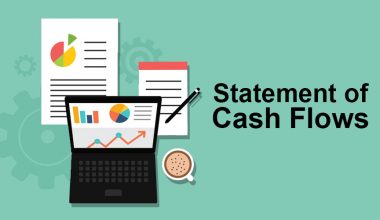The student loan interest deduction can reduce your taxable income by up to $2,500.Claim the student loan interest deduction to save up to $550 on your annual tax bill. Depending on your tax rate. There are a few requirements to meet, but if you do, it’s a simple process because you don’t have to itemize your deductions. Here’s all you need to know about deducting interest on student loans.
Student Loan Interest Deduction
The student loan interest deduction might help to reduce the amount of interest you pay each year on your student loans. If you have a $34,000 student loan debt and a 4.8 percent interest rate. You’ll pay around $1,500 in interest every year.
Fortunately, you may be able to deduct up to $2,500 in student loan interest payments from your income and profits at tax time. Lowering your adjusted gross income (AGI). Whether you itemize your deductions or take the standard deduction, you can claim the student loan interest deduction.
The standard deduction was substantially doubled as a result of the Tax Cuts and Jobs Act of 2017. For 2019, the standard deduction is:
- $12,200 if you’re filing singly
- $18,350 if you’re the head of your household
- $24,400 for married couples filing joint returns
As a result, about nine out of ten taxpayers will benefit from using the standard deduction. The good news is that you can claim the tax savings on student loan interest payments if you take the standard deduction. It’s no surprise that almost 12 million Americans claim nearly $14 billion in student loan interest deductions each year.
Overview
The Internal Revenue Service (IRS) lays out a number of tax deductions that people can use to lower their taxable income for the year. The student loan interest deduction is one of them. Allowing you to deduct up to $2,500 in interest paid on a student loan during the tax year. 1 Individual in the 22 percent tax rate who claim a $2,500 deduction will save $550 on their federal income tax bill for the year.
Taxpayers who want to take advantage of the deduction must meet specific requirements. Consider the following example:
- The student loan must have been taken out for the taxpayer, the taxpayer’s spouse, or dependent(s). Parents who help legal borrowers with repayment cannot claim the deduction.4
- The loan must be taken out during an academic period for which the student is enrolled at least half-time in a program leading to a degree, certificate, or other recognized credential.
- The loan must be used for qualified higher-education expenses (tuition, fees, textbooks, supplies, and equipment) and cannot include room and board, student health fees, insurance, and transportation.
- Loan must be used within a “reasonable period of time” after it is taken out, and the proceeds must be disbursed either within 90 days before the academic period starts or 90 days after it ends.
- The school where the student is enrolled must be an eligible institution, including all accredited public, non-profit, and privately owned for-profit post-secondary institutions that participate in the student aid programs managed by the U.S. Department of Education.
Unlike most other deductions, the student loan interest deduction is an adjustment to income on Form 1040. This means you don’t have to fill out a Schedule A. Which is to itemize deductions, in order to claim it.
What is the Student Loan Interest Deduction?
The student loan interest deduction might help to reduce the amount of interest you pay each year on your student loans. If you have a $34,000 student loan debt and a 4.8 percent interest rate. You’ll pay around $1,500 in interest every year.
Fortunately, you may be able to deduct up to $2,500 in student loan interest payments from your income and profits at tax time. Lowering your adjusted gross income (AGI). Whether you itemize your deductions or take the standard deduction, you can claim the student loan interest deduction.
The standard deduction was substantial as a result of the Tax Cuts and Jobs Act of 2017. For 2019, the standard deduction is:
- $12,200 if you’re filing singly
- $18,350 if you’re the head of your household
- $24,400 for married couples filing joint returns
As a result, about nine out of ten taxpayers will benefit from using the standard deduction. The good news is that you can claim the tax savings on student loan interest payments if you take the standard deduction. It’s no surprise that almost 12 million Americans claim nearly $14 billion in student loan interest deductions each year.
Eligibility for the Student Loan Interest Deduction
If your modified adjusted gross income (MAGI) reaches certain thresholds, you won’t be able to claim the student loan interest deduction. Most people’s modified adjusted gross income (MAGI) is simply their adjusted gross income (AGI) before any student loan interest payments are deducted.
The amended adjusted gross income limitations for the 2019 tax year were:
- $85,000 if single, head of household, or qualifying widow
- $170,000 if married and filing a joint return
In addition to income limits, you can’t claim the deduction if:
- Your parent or another relative claims you as a dependent on their own taxes
- You or your spouse are not legally responsible for repaying the loan (you’re making payments on a loan that your child took out in their own name, for example)
- You’re married and filing separate returns
Claiming the Student Loan Interest Deduction
Enter the permitted amount on line 20 of Schedule 1 of your 2019 Form 1040 to claim the student loan deduction.
On your tax return, the student loan interest deduction is an “above the line” income adjustment. That means you can take it whether you’re taking the standard deduction or itemizing your deductions.
Much of the work will be for you if you use tax preparation software like TaxAct. If you need assistance determining the acceptable amount to enter on line 20, read on.
#1. Find out how much interest you paid
Look for Form 1098-E, Student Loan Interest Statement. From your loan servicers to see how much interest you paid on your student loans throughout the tax year. By Jan. 31, any loan servicer who collected at least $600 in interest from you must submit you a Form 1098-E. Either electronically or by mail.
You can request a Form 1098-E from each servicer if you paid at least $600 in interest during the tax year but made payments to numerous services even if they collected less than $600 in interest from you. You can contact each of your services for the exact amount of interest paid during the tax year if you paid less than $600 in student loan interest.
#2. Calculate the reduction in your taxable income
Unless your income approaches or exceeds the eligibility restrictions. You can deduct up to $2,500 of student loan interest payments from your taxable income.
For the 2019 tax year, if your modified adjusted gross income (MAGI) is between:
- $70,000 and $85,000: If your filing status is single, head of household or qualifying widow
- $140,000 and $170,000: For married couples filing jointly
Remember that your MAGI is usually the same as your AGI before the student loan interest deduction is applied. There is a formula for calculating your decreased loan interest deduction if your income falls between the windows above. Similarly, use the Student Loan Interest Deduction Worksheet on Form 1040, or consult IRS Publication 970, “Tax Benefits for Education,” chapter 4 for more information.
Is it Worth Claiming Student Loan Interest on Your Tax Return?
It may be beneficial to claim a deduction for interest paid on student loans if you are eligible to do so. It reduces your adjusted gross income because it is a deduction that is taken above the line.
There are a number of additional tax advantages that are contingent on or restricted by your adjusted gross income. For instance, if your out-of-pocket medical expenses exceed 7.5% of your adjusted gross income, you may be eligible for a tax deduction for those expenses. Therefore, reducing your adjusted gross income (AGI) by claiming the student loan interest deduction can make it possible for you to deduct a greater portion of your medical costs.
The child and dependent care credit also have income limits based on your AGI; therefore, claiming the student loan interest deduction could help you qualify for a higher credit if you are trying to reduce your tax liability.
Do You Need to Itemize to Deduct Student Loan Interest?
The deduction for interest paid on student loans is an above-the-line tax deduction, which means that it immediately reduces the amount of your adjusted gross income that you are responsible for paying tax on.
You do not need to be concerned about not being able to claim the deduction for student loans even if you intend to use the standard deduction; you are able to claim it regardless. Even if you choose to itemize your deductions, you are still able to deduct the interest paid on your student loans.
How Much Can Take the Deduction Save You?
The amount that you can deduct toward your federal income taxes from your student loan interest depends on both your income and your tax bracket.
Calculate how much your deduction is worth by multiplying the amount of deductible interest you have by the tax bracket you are in for your federal income tax. Your income will be subject to taxation at the rate of 22% if, for example, you made $65,000 during the previous tax year. Your federal tax refund would be increased by $550 as a result of the deduction of $2500 ($2,500 multiplied by 0.22).
However, if your deduction causes you to fall into a lower-income category, the process becomes more complicated.
Using the worksheet found in IRS Publication 970, you will be able to determine whether or not you are eligible to deduct interest paid on student loans. You may also conduct a search on the internet for calculators that help you deduct the interest paid on student loans. This can make the process much simpler.
Student Loan Interest Deduction vs. Other Breaks
In addition to the student loan interest deduction, students enroll in higher education programs. And their parents may be eligible for various tax advantages, such as tax credits. Tax credits are more significant than deductions since they are from your tax liability on a dollar-for-dollar basis, rather than simply lowering your taxable income.
What Qualifies for the Deduction
If a loan was taken out only to pay qualified educational expenses for you, your spouse. Or a dependent while attending an authorized institution, the interest paid on the loan will usually qualify for the student loan interest deduction. The deduction does not apply to loans made by families or employers.
Qualified educational expenses include:
- College tuition and fees
- Room, board, and other living expenses
- Textbooks, supplies, and equipment
- Other necessary expenses like transportation
Colleges, universities, and vocational schools are eligible schools if they are to participate in a student aid program by the U.S. Department of Education.
Can I deduct student loan interest?
To deduct student loan interest, you must utilize a qualified student loan to pay for your own education costs. Your spouse or a dependent while attending an approved institution. In addition, the lender must meet the program’s eligibility requirements as set by the US Department of Education.
Federal student loan programs may be available to students who attend educational institutions that are not public universities and colleges. More so, technical and vocational schools, for-profit and nonprofit colleges, and other post-secondary institutions are among these institutions. You must take out the student loan yourself, not through an employer or a relative. Also, as the borrower, you must repay the loan within a reasonable time frame. The IRS, on the other hand, is willing to work with you if you are making an effort to repay it and are open and honest about your financial status.
The IRS Form 1098-E, Student Loan Interest Statement, is to report student loan interest payments to you and the IRS. If you paid $600 or more in interest during the tax year. Your loan servicer(s) will send you at least one 1098-E form.
When Can You No Longer Deduct Student Loan Interest?
If you are married and filing jointly, the amount at which your student loan deduction begins to be reduced begins to phase out at $145,000, and the amount at which you may no longer claim this deduction is $175,000. The phaseout begins at $70,000 for individuals who are filing their taxes alone and who do not have any dependents. If your MAGI is greater than $85,000, you will no longer be able to claim the deduction.
When Do You Get Your Student Loan Interest Form Information?
If you paid more than $600 in interest on your student loans, the company that services your loans is required to issue you a 1098-E form. If you have not received this form before the end of January, please get in touch with the company that is servicing your loan. You are still eligible to make a claim for interest payments that are less than $600. So long as you acquire the correct amount from your loan provider.
When you file your taxes using an online tax tool, you will be prompted to give the essential information at several points along the process. The relevant information can be found in box #1 of your 1098-E form, which is as follows: The lender is compensated with interest on student loans.
If I Default on My Student Loan, Does it Affect My Taxes?
If you stop making payments to the company that services your student loans and your loan falls into default, you could face a number of serious repercussions. For instance, the government may withhold a portion of your tax refund until the balance of your debt is paid off. Garnishment could be used to a variety of other federal benefits, including any payments received from Social Security.
Can I deduct student loan payments?
You cannot deduct the principal portion of your student loan payments, but you can deduct the interest portion of your payments up to $2,500.
According to a College Board study from 2020, the average in-state sticker price for four-year public college attendance in 2020-2021 was $10,560. Other expenses such as accommodation and board, class supplies, and fees pushed the average up to $26,820. Tuition at public institutions for out-of-state students was $27,020, while tuition for private colleges averaged $37,650. These averages were $43,280 and $54,880, respectively, hence, with the addition of various fees. Don’t throw money away with tuition rising every year. Take advantage of the student loan interest deduction if you qualify.
FAQs
Can I write off student loan payments?
You can take a tax deduction for the interest paid on student loans that you took out for yourself, your spouse, or your dependent. This benefit applies to all loans (not just federal student loans) used to pay for higher education expenses. The maximum deduction is $2,500 a year.
How does student loan interest affect taxes?
If you paid more than $600 in student loan interest during the year, your loan servicer is required to send you tax form 1098-E, which shows you exactly how much you paid in student loan interest during the year. If you paid less than $600, you can still claim the deduction.
What if I paid more than 2500 in student loan interest?
The student loan interest deduction allows you to deduct up to $2,500. … If you paid more than this amount, you cannot deduct the additional interest paid. This is a deduction, not a credit. That means you subtract the amount of deductible interest from your taxable income.
Do you have to report student loan interest on taxes?
If you made federal student loan payments in 2020, you may be eligible to deduct a portion of the interest you paid on your 2020 federal tax return. Student loan interest payments are reported both to the Internal Revenue Service (IRS) and to you on IRS Form 1098-E, Student Loan Interest Statement.






